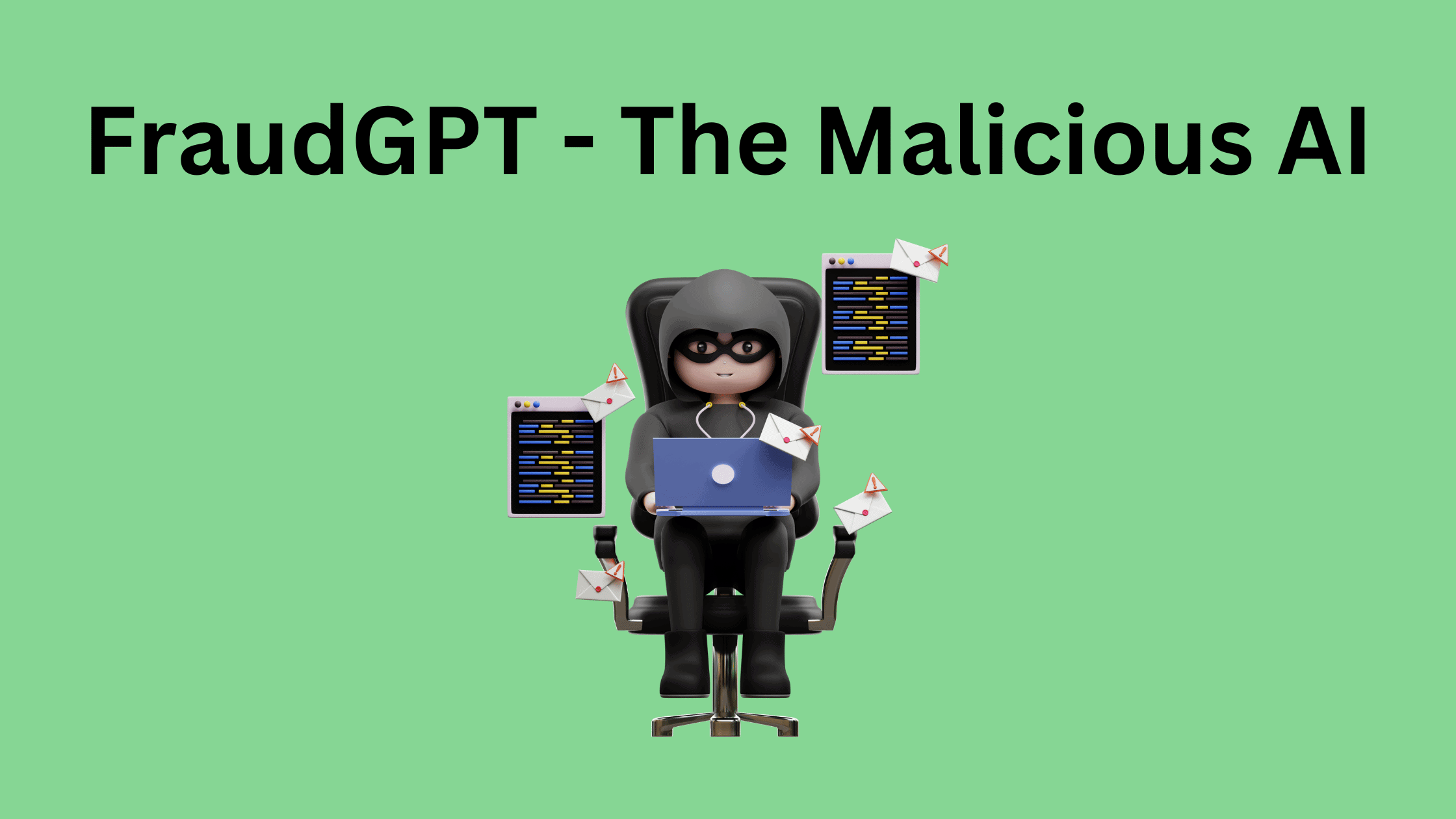Table of Contents
FraudGPT – The Emergence of Malicious Generative AI
The rapid advancement of AI technology has brought many useful applications. However, it has also given rise to new security threats. Recently, another dangerous generative AI tool named FraudGPT emerged on the dark web right after wormGPT, designed explicitly for malicious purposes. FraudGPT allows cybercriminals to automate and scale up sophisticated cyberattacks such as phishing campaigns, malware creation, and card fraud.
FraudGPT on Dark Web (Source: NetErich)
Let’s talk about another malicious generative AI tool called FraudGPT, its features, risks, and finally, how such tools could be tackled to protect your business.
What is FraudGPT?
According to Rakesh Krishnan, a Senior Threat Analyst at Netenrich, FraudGPT is an AI bot tailored for offensive hacking activities like crafting spear phishing emails, generating malware, carding frauds, etc. It has been circulating on the dark web since July 22, 2023, as an alternative to ChatGPT.
FraudGPT provides features like:
Writing malicious code
Creating undetectable malware
Finding cardable sites
Crafting phishing pages
Generating hacking tools
Writing scam emails/pages
Finding vulnerabilities
It allows unlimited characters without any restrictions. The subscription starts from $200/month to $1700/year. Over 3000 confirmed sales have happened already.
Why is FraudGPT Dangerous?
When criminals start using generative AI technologies, it creates a lot of new potential threats to the secure world. Here are some of the dangerous threats that could arise due to the emergence of malicious generative AI tools:
Sophisticated phishing: FraudGPT can generate personalized and context-aware phishing emails that appear more authentic, increasing the chance of recipients getting fooled.
Automated attacks: It enables attackers to automate phishing and malware campaigns to target more victims faster.
Evading detection: The novel AI-generated content could bypass traditional security filters designed for known threat patterns.
Scalability: Being AI-powered, FraudGPT allows attackers to execute campaigns at scale efficiently.
Lower barrier: It makes sophisticated cyberattacks more accessible to less technical criminals as well.
As per analysts, FraudGPT could become an ideal tool for mounting impactful phishing and business email compromise (BEC) attacks, resulting in huge financial frauds and data thefts.
The Emergence of Malicious AI Models
FraudGPT seems to follow the footsteps of similar nefarious AI models surfacing on the dark web:
WormGPT: Released in July 2023, it assists phishing campaigns through conversational capabilities.
CrimGPT: Uses GPT-3 API to generate text focused on hacking, carding, scamming, etc.
The threat actors are increasingly exploiting advanced generative AI to orchestrate cybercrimes at scale. While beneficial AI models have ethical safeguards, it’s easy to recreate similar models without such restrictions for malicious purposes.
How Can Businesses Defend Against FraudGPT-like Threats?
Here are some tips organizations can follow to shield themselves from this new class of AI-enabled threats:
Train employees in spotting AI-generated malicious content through subtle inconsistencies.
Employ strong email authentication like DMARC to prevent spoofing.
Use advanced AI-powered security solutions like anti-phishing and anomaly detection to identify emerging unknown threats.
Maintain comprehensive visibility into network activities to detect post-phishing malicious actions.
Implement rigorous incident response plans to contain damages promptly.
Conduct frequent attack simulations to assess and improve defense capabilities.
Adopt a zero-trust approach with robust identity and access management.
As malicious applications of AI will continue to grow, security strategies must leverage AI and automation to match the rising sophistication of attacks. Staying vigilant and proactive is key to surviving the AI-driven cyber risk landscape.
The Bottom Line
The emergence of FraudGPT exemplifies the dangers of unfettered AI development. Without proper governance, advanced generative models can be easily weaponized by threat actors, as evident by tools like FraudGPT designed explicitly for orchestrating cybercrimes. To counter this threat, the AI community must prioritize model transparency, accountability, and ethics in development and deployment. On the defense side, security solutions must integrate intelligent systems to match the automation and scale achieved by such threats. With collaborative efforts on both fronts, the promise of AI can be harnessed while mitigating its risks.
We hope this post helps you know about a malicious generative AI tool, which is known as FraudGPT, its features, risks, and finally, how such tools could be tackled to protect your business. Thanks for reading this post. Please share this post and help secure the digital world. Visit our website thesecmaster.com, and our social media page on Facebook, LinkedIn, Twitter, Telegram, Tumblr, Medium, and Instagram and subscribe to receive updates like this.
You may also like these articles:
Arun KL
Arun KL is a cybersecurity professional with 15+ years of experience in IT infrastructure, cloud security, vulnerability management, Penetration Testing, security operations, and incident response. He is adept at designing and implementing robust security solutions to safeguard systems and data. Arun holds multiple industry certifications including CCNA, CCNA Security, RHCE, CEH, and AWS Security.
